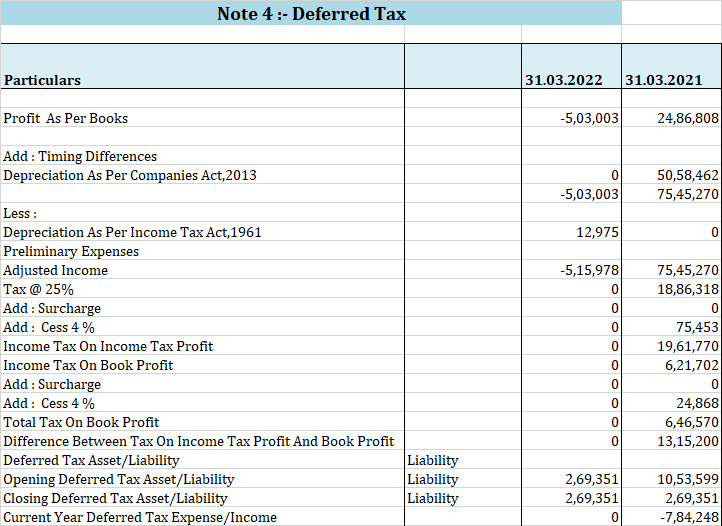Understanding Deferred Tax: A Guide to LedgerFusion
Deferred Tax By LedgerFusion
Deferred tax assets and liabilities are accounting concepts that apply to private limited as well as limited companies, just as they do for other types of entities. These items are used to account for temporary differences between the accounting and tax treatment of certain transactions or events. Here's an explanation of deferred tax assets and liabilities in the context of a private limited company:
Deferred Tax Assets (DTAs) :
Deferred tax assets are recorded on the balance sheet when a company has overpaid its income taxes or has recognized expenses on its financial statements that have not yet been deducted for tax purposes. DTAs are a result of temporary differences between accounting and tax rules. They represent potential future tax benefits that the company can realize when it reduces its taxable income in the future. Common causes of DTAs include:
1.Accrued Expenses :
If the company records expenses in its financial statements before they are deductible for tax purposes, it creates a deferred tax asset.
2. Loss Carry forwards :
If the company has tax losses that it can carry forward to offset against future taxable income, these losses become deferred tax assets.
3. Depreciation Differences :
Differences in the timing of recognizing depreciation on assets for accounting and tax purposes can lead to DTAs.
4.Provisions and Reserves :
Setting up provisions for future expenses or reserves can create deferred tax assets if these items are tax-deductible when paid.
Deferred Tax Liabilities (DTLs):
Deferred tax liabilities, on the other hand, are recorded on the balance sheet when a company has recognized income on its financial statements that will be taxed in future periods. DTLs arise due to temporary differences that will result in higher tax payments in the future. Common causes of DTLs include:
1. Accelerated Depreciation :
If the company uses accelerated depreciation methods for tax purposes, it may recognize higher depreciation expense for accounting purposes, leading to DTLs.
2. Unrealized Gains :
Recognizing gains on assets that have not yet been sold can create deferred tax liabilities if these gains will be taxed when the assets are eventually sold.
3. Revenue Recognition :
Differences in recognizing revenue for accounting and tax purposes can result in DTLs.
In the case of a private limited company, as with any other type of entity, deferred tax assets and liabilities are important for financial reporting and tax compliance. The company must ensure that it complies with the relevant accounting standards and tax regulations in recording and disclosing these items in its financial statements. Failure to do so can have an impact on the company's reported financial position and may lead to tax penalties or adjustments.
Deferred tax assets and liabilities are governed by accounting standards, such as the International Financial Reporting Standards (IFRS) and Generally Accepted Accounting Principles (GAAP) in the United States. Companies are required to assess their deferred tax assets and liabilities regularly and adjust them as necessary to reflect changes in tax rates and future expectations.
It's important to work with a qualified accountant or tax professional to properly account for and manage deferred tax assets and liabilities to ensure accurate financial reporting and tax compliance.
Following is the note on deferred tax presented by LedgerFusion Reference: General Instructions for Deferred Tax Get your Free Trial for LedgerFusion Today
